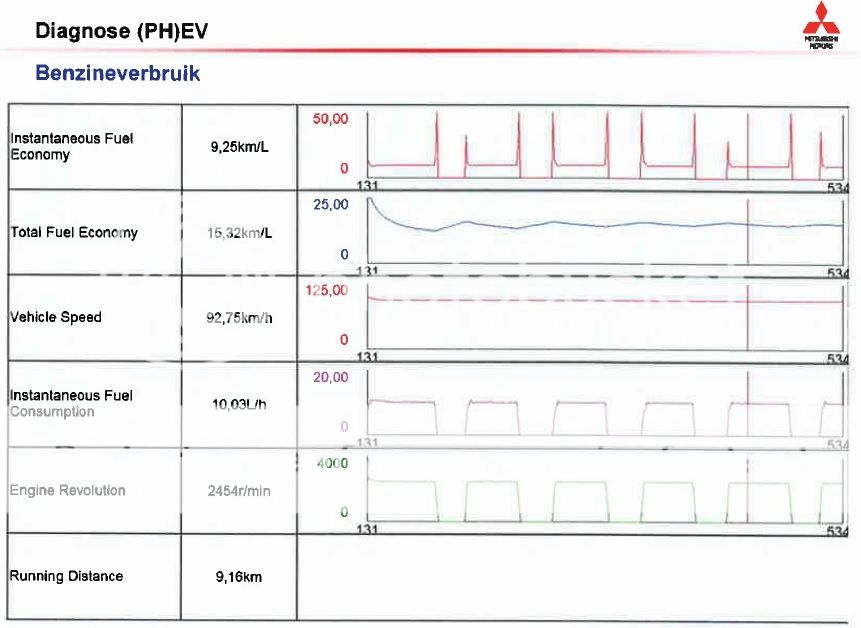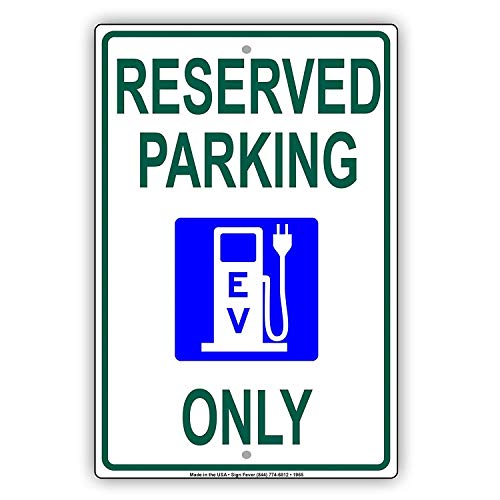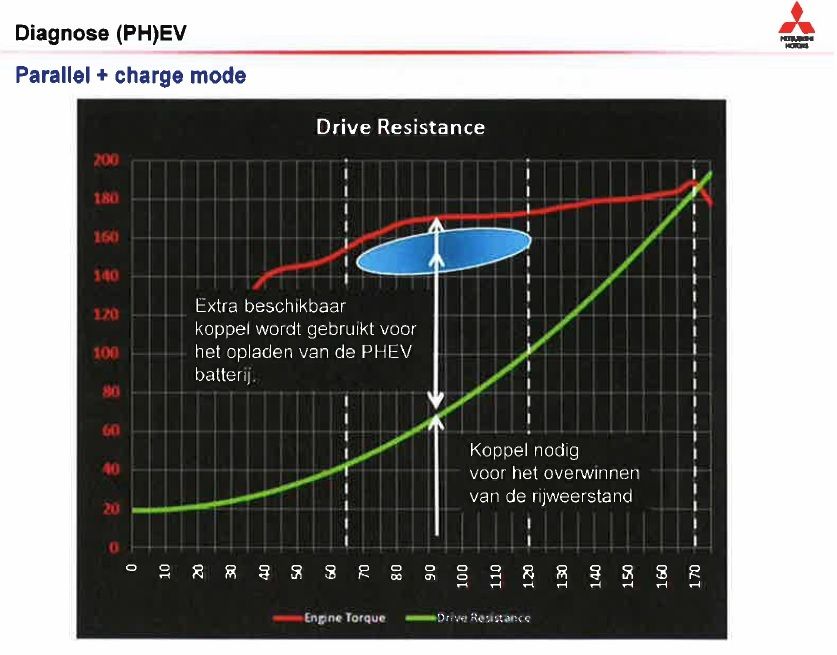Trex
Well-known member
I am still catching up on posts but I am now on the bottom of the first page of the technical discussion where gwatpe did his Australian road trip (it looks like he had fun).
Now at the back pages of the topic the discussions sort of went off on a tangent (seems to happen regularly here :lol: ) debating percentages of EV when running in hybrid mode.
This I wish to discuss.
Now back when I was discussing what I called the phev's virtual electric overdrive I did some calculations using the next graphs that went like this (I love copy and paste it sure saves typing):

graphs from anko
The first thing to do is get all the quantities into minutes for such a short trip of 9.16Kms.
92.75kph = 1.546 km/min
10.03Lts/h = 0.167Lts/min
Now the trip of 9.16km distance divided by our 1.546km/min = 5.925 min
If the petrol motor had run all the time on this trip at 0.167Lts/min X 5.925 min = 0.989Lts consumed
But it did not run all the time and used 15.32km/Lt so 9.16km divided by 15.32km/L = 0.598Lts for 9.16km
Now the fun bit 0.598Lts used divided by 0.989Lts if motor ran all the time = 0.605 X 100 = 60.5% of the time motor actually running!
Now I have cut the stuff out that is not applicable to this topic and just kept the calculation that shows how much the motor ran on this test using a MUTT-III
Note the "60.5% of the time motor actually running!" on the last line.
So 39.5% EV in this test.
Now for me personally I have seen that approx 40% EV figure, on trips away from the grid charge, (and not counting the grid charge) regularly on my MMCS so I totally believe the Mitsubishi test.
It still blows me away how efficient the Phev is by charging the drive battery (whenever the petrol motor runs) so it can ev later.
A 1.8 tonne 4wd with the aerodynamics of a brick getting 6.5l/100k at 92kph (with a petrol motor) as seen in this is graph is pretty bloody good. :lol:
So folks check your gauge and see if you get something similar.
Regards Trex.
Now at the back pages of the topic the discussions sort of went off on a tangent (seems to happen regularly here :lol: ) debating percentages of EV when running in hybrid mode.
This I wish to discuss.
Now back when I was discussing what I called the phev's virtual electric overdrive I did some calculations using the next graphs that went like this (I love copy and paste it sure saves typing):

graphs from anko
The first thing to do is get all the quantities into minutes for such a short trip of 9.16Kms.
92.75kph = 1.546 km/min
10.03Lts/h = 0.167Lts/min
Now the trip of 9.16km distance divided by our 1.546km/min = 5.925 min
If the petrol motor had run all the time on this trip at 0.167Lts/min X 5.925 min = 0.989Lts consumed
But it did not run all the time and used 15.32km/Lt so 9.16km divided by 15.32km/L = 0.598Lts for 9.16km
Now the fun bit 0.598Lts used divided by 0.989Lts if motor ran all the time = 0.605 X 100 = 60.5% of the time motor actually running!
Now I have cut the stuff out that is not applicable to this topic and just kept the calculation that shows how much the motor ran on this test using a MUTT-III
Note the "60.5% of the time motor actually running!" on the last line.
So 39.5% EV in this test.
Now for me personally I have seen that approx 40% EV figure, on trips away from the grid charge, (and not counting the grid charge) regularly on my MMCS so I totally believe the Mitsubishi test.
It still blows me away how efficient the Phev is by charging the drive battery (whenever the petrol motor runs) so it can ev later.
A 1.8 tonne 4wd with the aerodynamics of a brick getting 6.5l/100k at 92kph (with a petrol motor) as seen in this is graph is pretty bloody good. :lol:
So folks check your gauge and see if you get something similar.
Regards Trex.





































